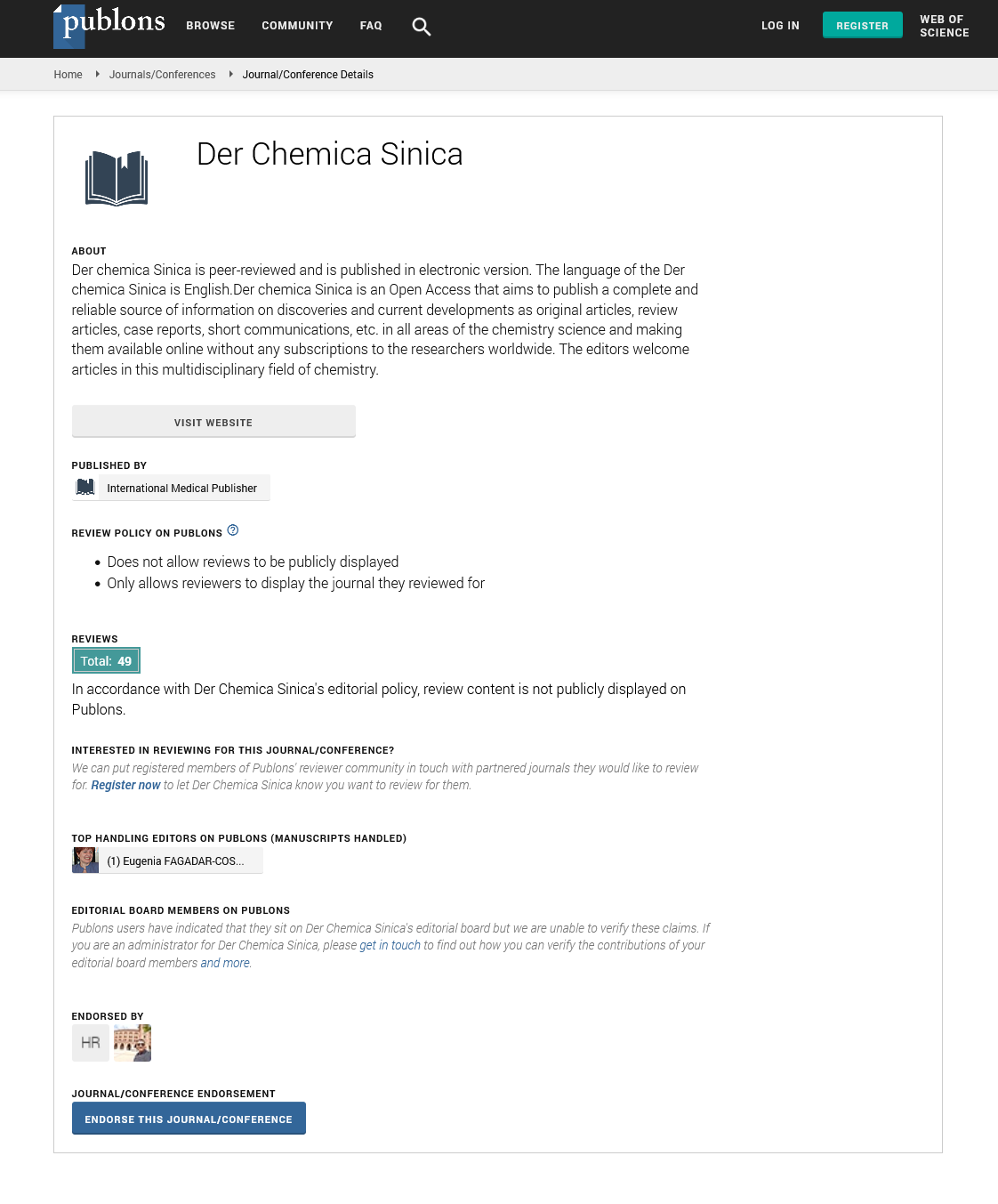ISSN : 0976-8505
Der Chemica Sinica
Abstract
Study on the Preparation, Characterization of a Novel Solid Br̮̦̉̉nsted Acid Catalyst H3PW12O40/C and its Catalytic Performance in the Synthesis of Biodiesel via Esterification Reaction of Oleic Acid and Methanol
Waste camellia seed shell was placed in fluidized bed tubular reactor and carbonized at 700°C for the preparation of a carbon material, and which was then used as the support for the synthesis of a novel solid Brönsted acid catalyst H3PW12O40/C by impregnation of it with H3PW12O40 solution. The obtained H3PW12O40/C catalyst was characterized by scanning electron microscope, X-ray diffraction, transmission electron microscopy, Fourier transform infrared spectoscopy, thermogravimetric analysis. The catalytic activity of H3PW12O40/C was evaluated from the esterification reaction of oleic acid with methanol, which was performed in a batch reactor. Results shown that the highest conversion of oleic acid was 75.83 wt% when the molar ratio of methanol to oleic acid was 10:1, reaction temperature was 60°C and catalyst loading was 1 wt% after 5 h. The high activity can be ascribed to the waste camellia seed shell-derived carbon material is mainly consisted of hydrophobic carbon sheet, which means that the adsorption of water on its Brönsted acid sites was reduced, so the hydration between Brönsted acid sites and H2O was also reduced. And eventually, the deactivation of Brönsted acid sites was reduced.
Author(s): Qing Shu, Guo-qiang Tang, Feng-sheng Liu, Hai-yan Wei
Abstract | Full-Text | PDF
Share This Article
Google Scholar citation report
Citations : 6019
Der Chemica Sinica received 6019 citations as per Google Scholar report
Der Chemica Sinica peer review process verified at publons
Abstracted/Indexed in
- Google Scholar
- Open J Gate
- Genamics JournalSeek
- China National Knowledge Infrastructure (CNKI)
- Directory of Research Journal Indexing (DRJI)
- Publons
- MIAR
- International Committee of Medical Journal Editors (ICMJE)
- Serials Union Catalogue (SUNCAT)
- Geneva Foundation for Medical Education and Research
- Secret Search Engine Labs
- Euro Pub
- CAS (Chemical Abstracting Services)
- University of Barcelona
Open Access Journals
- Aquaculture & Veterinary Science
- Chemistry & Chemical Sciences
- Clinical Sciences
- Engineering
- General Science
- Genetics & Molecular Biology
- Health Care & Nursing
- Immunology & Microbiology
- Materials Science
- Mathematics & Physics
- Medical Sciences
- Neurology & Psychiatry
- Oncology & Cancer Science
- Pharmaceutical Sciences
